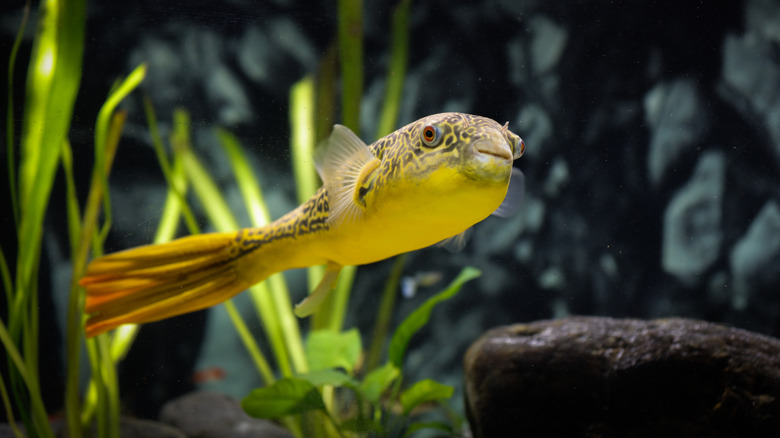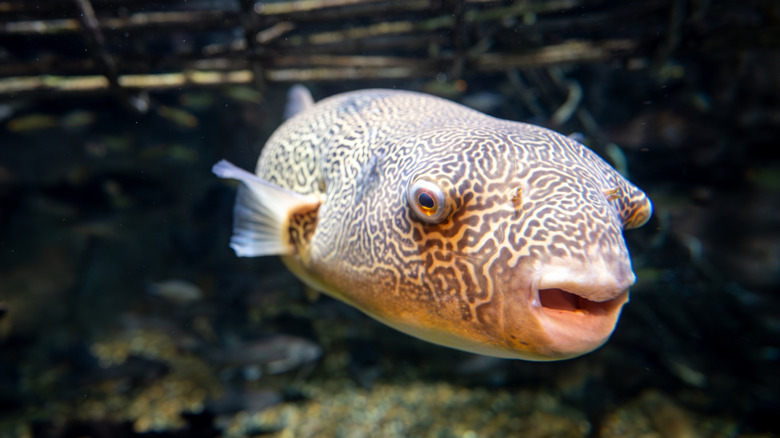One Of The Largest Blowfish You Can Own As A Pet Can Live For Over 20 Years
An aquarium offers a view into another world, inspiring wonder, education, and celebration of nature's beauty. For the determined aquarists, fish can also become a collection of unique species and color morphs to accentuate their aquariums. One choice that's certainly a showstopper is the long-living Mbu pufferfish, also known as the giant pufferfish because of its size.
A native African freshwater species hailing from the Congo River, the Mbu pufferfish can grow to 30 inches long, though many reach a length between 24 and 28 inches. This measurement is double the size of the second-largest freshwater pufferfish, the Fahaka puffer, which can grow to 15 inches. At the same time, the Mbu is unique within the pufferfish family because it's known to inflate its muscles as a flex, commonly known as "practice puffs." For owners, this gives them a brief chance to see a pufferfish in action, as some other species only inflate due to environmental stressors.
In captivity, an Mbu pufferfish can live to be over 20 years old with proper care and consideration. While not boasting the same pet lifespan as the long-living koi fish, a well-cared-for Mbu can become a long-term commitment for a potential owner. Considering the size and longevity of the Mbu, adequate care is essential in allowing it to reach its full potential, meaning this isn't a pet purchase to be taken lightly.
The challenges of caring for a Mbu pufferfish to its full size
To get a Mbu pufferfish to live its longest life and reach its maximum size, it needs a tank that's 8x3x3 feet or larger. This size likely means that fish enthusiasts need to purchase and construct the aquarium at home or build their own fish tank. The Mbu should also be the only one of its kind in any aquarium, and some owners advise keeping them entirely separate from any fish, though you can gauge how they react with others before separating them.
An Mbu can be injured in interactions with fish bigger than it, stingrays, or tank-mates that may go after the same food. Generally, avoiding territorial or aggressive fish will make for a happier, more balanced tank. The puffer is known to be sensitive, and it displays this visually when its regular colors wash out and areas around its face darken. Addressing potential stressors when they appear will help longevity, and an Mbu should never be provoked into puffing up, which results from purposely stressing or scaring the fish.
Feeding your Mbu pufferfish a balanced diet and wearing down its teeth with hard food are essential; this species needs a variety of feed, including high-grade pellets, frozen crayfish or crabs, snails, insects, and earthworms. Other considerations for a healthy environment include maintaining agreeable water values. Ultimately, with love and attention, the Mbu pufferfish can have an impressive lifespan beyond popular pets like cats and dogs and make for a remarkable addition to any collection.

